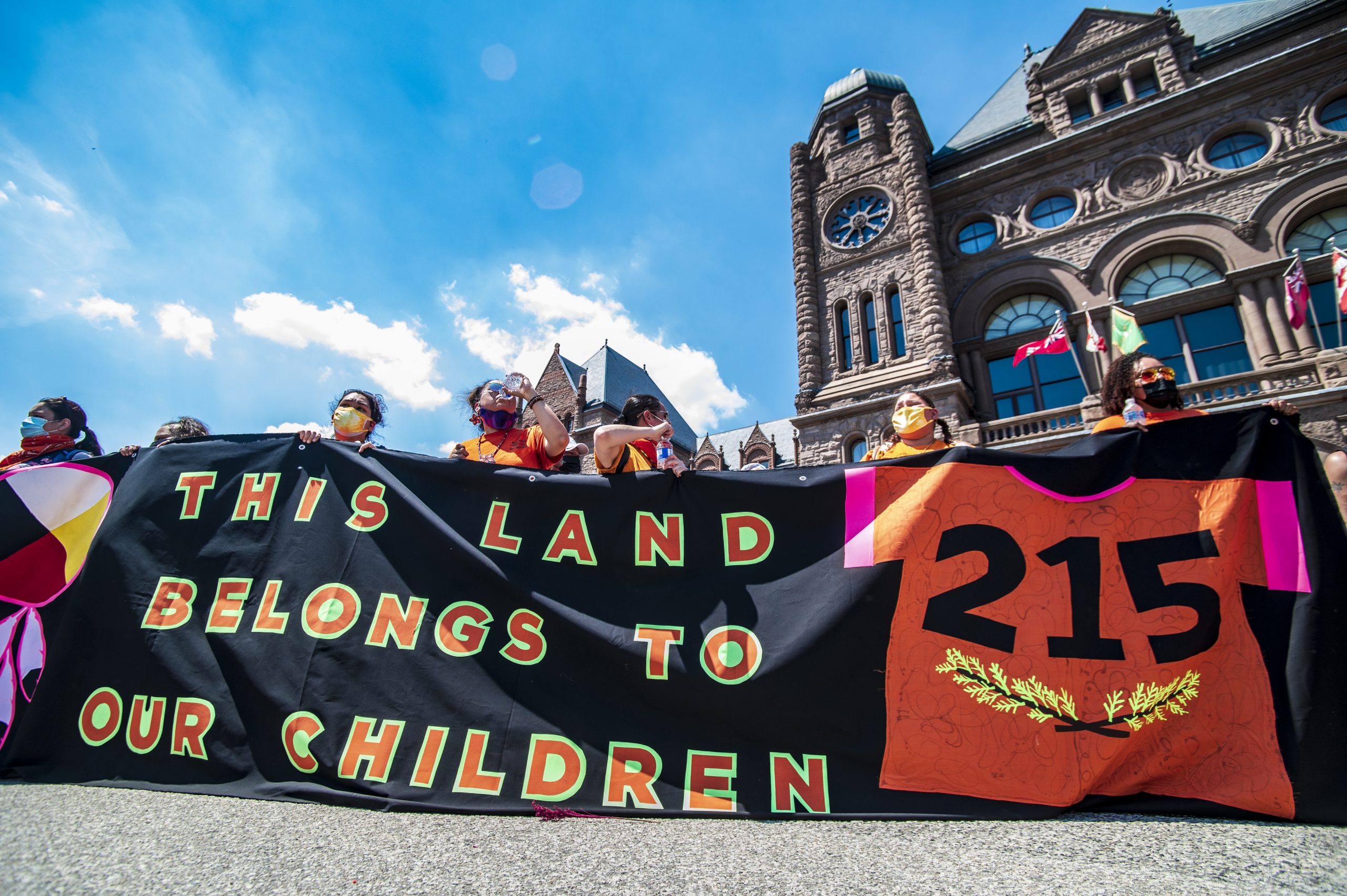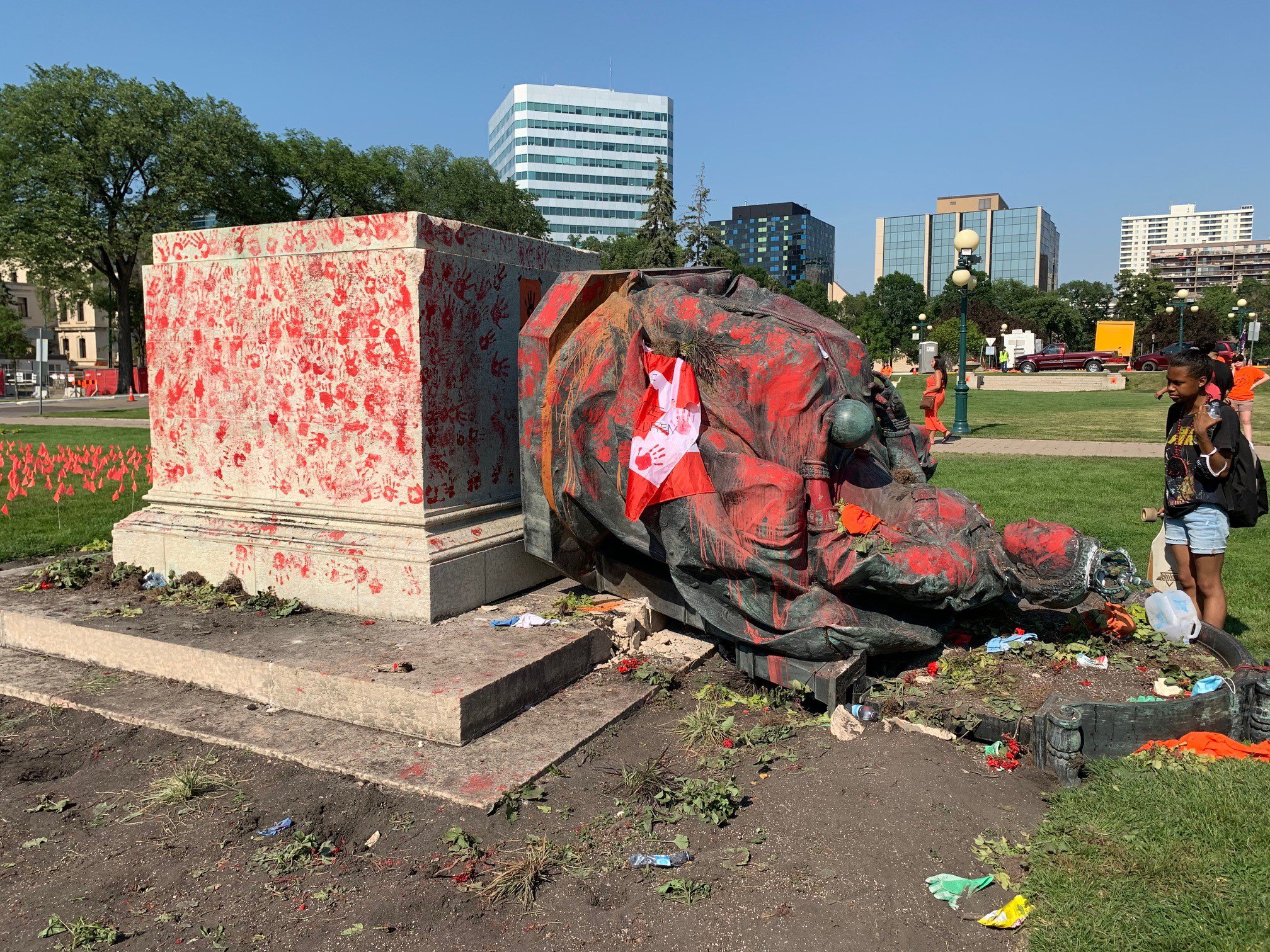The recent “discoveries” of unmarked graves of children at the sites of former Indian Residential Schools (IRS) is a stark reminder of an unspoken or ignored history between Indigenous Peoples and Canada.
The reactions by many Canadians to these events is a strong indicator that despite all of the heightened awareness of the residential school system, there is little understanding how these institutions affected communities and families.
You may unsubscribe from any of our newsletters at any time.
More on Broadview:
- 8 common claims of residential school deniers and how to shut them down
- How Indigenous burning practices can help stop destructive wildfires
- What we know about the nutritional experiments performed on residential school children
Often relying on assumptions and stereotypes, some Canadians show little effort to learn about the different perspectives and experiences held by Indigenous people. This encourages many non-Indigenous people to support measures they believe have the approval of all Indigenous people. But communities are not monolithic; different opinions and experiences exist.
From the Bryce Report to RCAP
The findings outlined in the Truth and Reconciliation Commission’s (TRC) 2015 Final Report shocked Canada. For many, this was the first time that they heard of this truth, despite previous reports that flagged the horrors of residential schools.
The Bryce Report from 1907 spoke about the harsh realities of IRS, and the Royal Commission on Aboriginal Peoples from 1996 called IRS:
“… an attempt by successive governments to determine the fate of Aboriginal people in Canada by appropriating and reshaping their future in the form of thousands of children who were removed from their homes and communities …”
In 2015, TRC commissioner Marie Wilson declared that, “It is the survivors’ telling of their stolen childhoods that has shaken us all awake.”
A different awakening
Today, there is a different awakening and it’s happening in Indigenous circles. It is a realization of lives and futures lost. It is a resurgence of pain and grief experienced by families and communities that knew of these unmarked graves.
It is a rekindling of anger toward religious entities, specifically the Catholic Church, that had a role in running these schools. And it is an unveiling of the complicated dynamics within communities, especially those with members who are part of the church.
View this post on Instagram
As someone who grew up in the Catholic tradition in Kahnawake, Que., and now teaches in a theological school, there’s an inner conflict as I reflect on being part of a faith tradition that contributed to a process that caused such pain.
There are many Indigenous people who believe Indigenous people should not be Christians, furthering tensions. Instead of coming together, communities are becoming divided — some want to react and take action, while others want to deal and heal privately.
I recognize the anger toward the church, but struggle with some of the reactions, such as the burning of buildings. In response Indigenous leaders, such as former Assembly of First Nations Chief Perry Bellegarde, have called for communities to find a better way.
Lasting impacts and a path towards healing
Although there has been a growing awareness and eagerness to learn, I believe that many non-Indigenous people don’t have the in-depth, community understanding to know that IRS legacy, findings and lasting colonialism can incite various impacts and reactions from Indigenous people.
Many institutions, such as schools and churches, have Indigenous people within them who are trying to address these impacts and make change. The work is slow and doesn’t always produce immediate transformation. So an action, such as tearing down a statue or setting a church on fire, may provide some sense of satisfaction, however that doesn’t change the systems that contribute to the current problems in many communities. Problems like a lack of clean drinking water, inequities within health and education systems and higher levels of poverty.

One may ask: How do we proceed? A fair question. I look to Chief Cadmus Delorme from Cowessess First Nation, who offers these words:
“We all must put down our ignorance and accidental racism of not addressing the truth that this country has with Indigenous people. We are not asking for pity, but we are asking for understanding. We need time to heal and this country must stand by us.”
Impulsive reactions will not provide any long-term solutions. It is time to move away from this way of dealing with issues and start by becoming more reflective, acknowledge that Indigenous communities and people aren’t monolithic, that we all heal, grieve and deal with tragedy differently. And to stand with us, Canadians must listen and understand, give time and space.
If you are an Indian Residential School survivor, or have been affected by the residential school system and need help, you can contact the 24-hour Indian Residential Schools Crisis Line: 1-866-925-4419![]()
***
Jonathan Hamilton-Diabo is an assistant professor (Teaching Stream, Theology) at the University of Toronto and a special advisor on Indigenous Initiatives at Victoria University.
This article is republished from The Conversation under a Creative Commons license. Read the original article.













